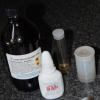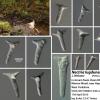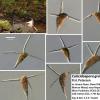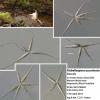
07-12-2025 16:07
Arnold BüschlenHallo, ich habe in einer Moos-Aufsammlung (epiphy

08-12-2025 21:04
Mark Stevens"Hello everyone,I'm relatively new to microscopy (

09-12-2025 12:06
 Andgelo Mombert
Andgelo Mombert
Bonjour,Je recherche l'article concernant Hypobryo

08-12-2025 18:59
 Lothar Krieglsteiner
Lothar Krieglsteiner
.. found by a seminar-participant, I do not know t

08-12-2025 17:37
 Lothar Krieglsteiner
Lothar Krieglsteiner
20.6.25, on branch of Abies infected and thickened

16-03-2014 22:00
Hello,I found this species a few months ago but ha

08-12-2025 13:39
Thomas Læssøehttps://svampe.databasen.org/observations/10572899
Ingoldian Fungi
Chris Yeates,
02-05-2015 19:03
 Bonjour tous
Bonjour tousThis time of year is not the best time to collect these fungi, but a recent species-rich collection has encouraged me to draw the attention (or remind) ASCOFrance members to this branch of mycological study (Alain G is clearly 'on the case'!). I know many on here have made excellent collections of teleomorphs of aquatic and semi-aquatic ascos.
All that is needed is naturally-formed foam in streams, or sometimes at the edge of standing water, and the simplest of materials:
~ a teaspoon
~ a water-tight container
~ a botanical fixative (otherwise the conidia start to germinate when they touch a solid object) Formol Acetic Alcohol is the one normally used
~ literature - this http://www.ascofrance.com/uploads/document/1989DescalsAquaticHyphos-0001.pdf which I have uploaded to ASCOFrance was produced for a workshop I helped organise many years ago, and is still the first one I consult when identifying conidia
Most of the fungi encountered are anamorphs of ascomycete fungi; for a number the teleomorph is also now known. Occasionally one comes across fungi from other groups: in the foam in these photographs were also the coronate conidia of a zygomycete (Erynia rhizospora) and those of a member of the tiny basidiomycete order the Classiculales http://en.wikipedia.org/wiki/Classiculomycetes. I have included images of three fungi here, before I submit them to the Database.
Nectria lugdunensis - these are conidia of the Heliscus anamorph, they are characteristically shaped like cloves (clous de girofle /Gewürznelken); once, many years ago, I collected a semi-submerged branch with both the anamorph and teleomorph growing together.
Culicidospora gravida - these remarkable conidia have been described by Ingold as looking like penguins, to me they also resemble hummingbirds. The granular contents are characteristic, I have not found a reference yet to the coloured contents - these are not stained.
Flabellospora acuminata - another species with large remarkably shaped (and large) conidia - an aquatic lifestyle evolves its own solutions.
I hope this may encourage others to dip their toes into this fascinating area of study.
Cordialement
Chris
Stip Helleman,
03-05-2015 22:16

Re : Ingoldian Fungi
wonderful Chris,
these fungi are mostly unnoticed by me although they are lovely.
cheers,
Stip
these fungi are mostly unnoticed by me although they are lovely.
cheers,
Stip
Nick Aplin,
03-05-2015 23:09
Re : Ingoldian Fungi
Very nice Chris :)
Thanks for sharing these beautiful images,
Nick
Christian Lechat,
04-05-2015 07:28

Re : Ingoldian Fungi
Hi Chris,
I have a collection of sexual state of Neonectria lugdunensis (Sacc. & Therry) L. Lombard & Crous 2014 = Heliscus lugdunensis Sacc. & Therry, collected by Yannick Mourgues on 20.Feb. 2010, France, Hautes-Alpes, Jourcins, St André d'Embrun. I attach some images of this collection.
Cheers,
Christian
I have a collection of sexual state of Neonectria lugdunensis (Sacc. & Therry) L. Lombard & Crous 2014 = Heliscus lugdunensis Sacc. & Therry, collected by Yannick Mourgues on 20.Feb. 2010, France, Hautes-Alpes, Jourcins, St André d'Embrun. I attach some images of this collection.
Cheers,
Christian
MARIA VIRGINIA BIANCHINOTTI,
06-05-2015 20:11
Re : Ingoldian Fungi
Nice photos! Thank you!
Michel Hairaud,
06-05-2015 21:53

Re : Ingoldian Fungi
Hi Chris,
How would you tell in English '' je suis scotché par la beauté des photos'' !
SOmething like ''I am stuck ...'' may be more colloquial
Bravo AMitiés. Michel
Stip Helleman,
06-05-2015 22:40

Re : Ingoldian Fungi
Great,
thanks Christian to show both morphs together.
Stip
thanks Christian to show both morphs together.
Stip





 Neonectria-lugdunensis-0001.jpg
Neonectria-lugdunensis-0001.jpg